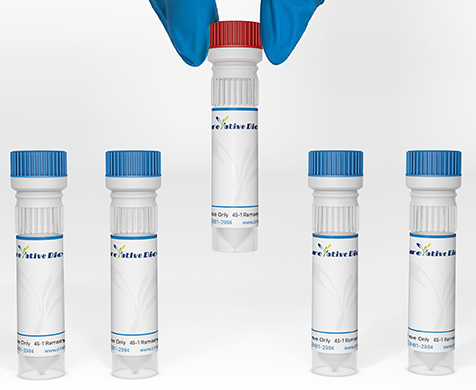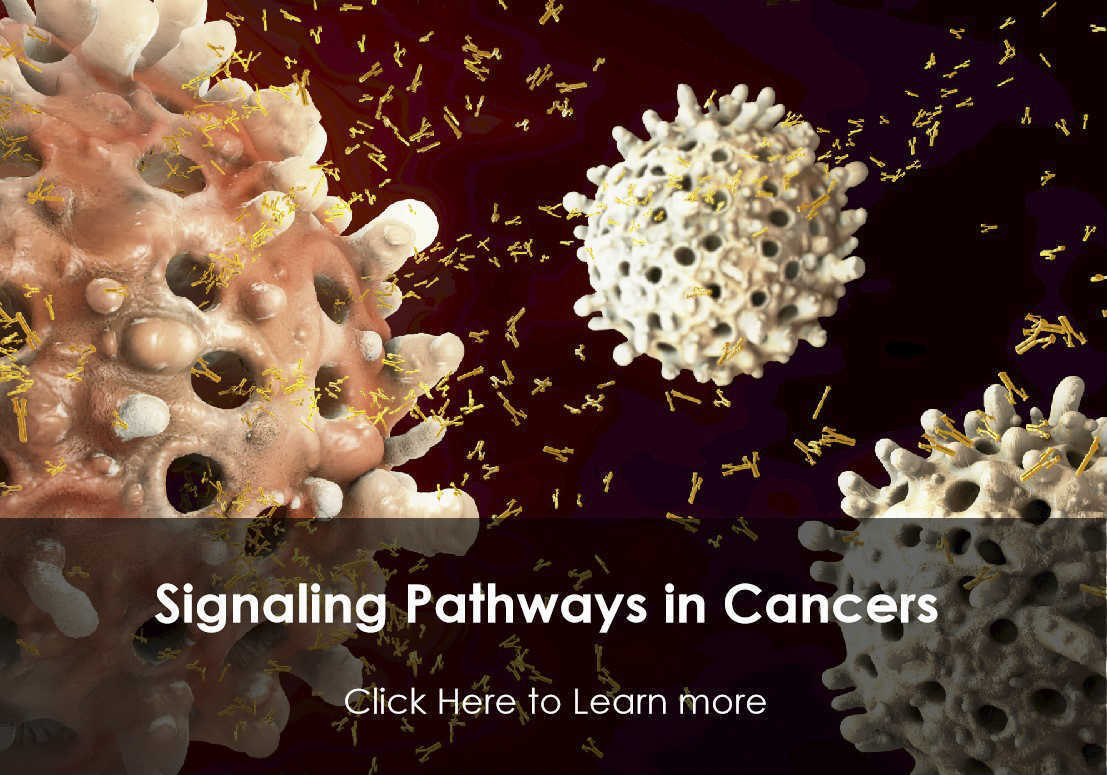FZD3
This gene is a member of the frizzled gene family. Members of this family encode seven-transmembrane domain proteins that are receptors for the wingless type MMTV integration site family of signaling proteins. Most frizzled receptors are coupled to the beta-catenin canonical signaling pathway. The function of this protein is unknown, although it may play a role in mammalian hair follicle development. Alternative splicing results in multiple transcript variants. This gene is a susceptibility locus for schizophrenia.
Full Name
frizzled class receptor 3
Function
Receptor for Wnt proteins. Most of frizzled receptors are coupled to the beta-catenin canonical signaling pathway, which leads to the activation of disheveled proteins, inhibition of GSK-3 kinase, nuclear accumulation of beta-catenin and activation of Wnt target genes. A second signaling pathway involving PKC and calcium fluxes has been seen for some family members, but it is not yet clear if it represents a distinct pathway or if it can be integrated in the canonical pathway, as PKC seems to be required for Wnt-mediated inactivation of GSK-3 kinase. Both pathways seem to involve interactions with G-proteins. Activation by Wnt5A stimulates PKC activity via a G-protein-dependent mechanism. Involved in transduction and intercellular transmission of polarity information during tissue morphogenesis and/or in differentiated tissues. Plays a role in controlling early axon growth and guidance processes necessary for the formation of a subset of central and peripheral major fiber tracts. Required for the development of major fiber tracts in the central nervous system, including: the anterior commissure, the corpus callosum, the thalamocortical, corticothalamic and nigrostriatal tracts, the corticospinal tract, the fasciculus retroflexus, the mammillothalamic tract, the medial lemniscus, and ascending fiber tracts from the spinal cord to the brain. In the peripheral nervous system, controls axon growth in distinct populations of cranial and spinal motor neurons, including the facial branchimotor nerve, the hypoglossal nerve, the phrenic nerve, and motor nerves innervating dorsal limbs. Involved in the migration of cranial neural crest cells. May also be implicated in the transmission of sensory information from the trunk and limbs to the brain. Controls commissural sensory axons guidance after midline crossing along the anterior-posterior axis in the developing spinal cord in a Wnt-dependent signaling pathway. Together with FZD6, is involved in the neural tube closure and plays a role in the regulation of the establishment of planar cell polarity (PCP), particularly in the orientation of asymmetric bundles of stereocilia on the apical faces of a subset of auditory and vestibular sensory cells located in the inner ear. Promotes neurogenesis by maintaining sympathetic neuroblasts within the cell cycle in a beta-catenin-dependent manner (By similarity).
Biological Process
Canonical Wnt signaling pathway Source: UniProtKB
Cell proliferation in midbrain Source: Ensembl
Commissural neuron axon guidance Source: Ensembl
Dopaminergic neuron axon guidance Source: Ensembl
Establishment of planar polarity Source: Ensembl
Hair follicle development Source: Ensembl
Inner ear morphogenesis Source: Ensembl
Midbrain morphogenesis Source: ParkinsonsUK-UCL
Negative regulation of execution phase of apoptosis Source: UniProtKB
Negative regulation of mitotic cell cycle, embryonic Source: UniProtKB
Neural tube closure Source: Ensembl
Neuron differentiation Source: UniProtKB
Neuron migration Source: Ensembl
Planar cell polarity pathway involved in axon guidance Source: Ensembl
Positive regulation of neuroblast proliferation Source: UniProtKB
Post-anal tail morphogenesis Source: Ensembl
Response to drug Source: Ensembl
Response to electrical stimulus Source: Ensembl
Serotonergic neuron axon guidance Source: Ensembl
Sympathetic ganglion development Source: UniProtKB
Wnt signaling pathway, planar cell polarity pathway Source: ParkinsonsUK-UCL
Cell proliferation in midbrain Source: Ensembl
Commissural neuron axon guidance Source: Ensembl
Dopaminergic neuron axon guidance Source: Ensembl
Establishment of planar polarity Source: Ensembl
Hair follicle development Source: Ensembl
Inner ear morphogenesis Source: Ensembl
Midbrain morphogenesis Source: ParkinsonsUK-UCL
Negative regulation of execution phase of apoptosis Source: UniProtKB
Negative regulation of mitotic cell cycle, embryonic Source: UniProtKB
Neural tube closure Source: Ensembl
Neuron differentiation Source: UniProtKB
Neuron migration Source: Ensembl
Planar cell polarity pathway involved in axon guidance Source: Ensembl
Positive regulation of neuroblast proliferation Source: UniProtKB
Post-anal tail morphogenesis Source: Ensembl
Response to drug Source: Ensembl
Response to electrical stimulus Source: Ensembl
Serotonergic neuron axon guidance Source: Ensembl
Sympathetic ganglion development Source: UniProtKB
Wnt signaling pathway, planar cell polarity pathway Source: ParkinsonsUK-UCL
Cellular Location
Cell membrane; Apical cell membrane; Membrane; Cell surface. Colocalizes with FZD6 at the apical face of the cell (By similarity).
Topology
Extracellular: 23-205
Helical: 206-226
Cytoplasmic: 227-237
Helical: 238-258
Extracellular: 259-288
Helical: 289-309
Cytoplasmic: 310-328
Helical: 329-349
Extracellular: 350-374
Helical: 375-395
Cytoplasmic: 396-420
Helical: 421-441
Extracellular: 442-477
Helical: 478-498
Cytoplasmic: 499-666
Helical: 206-226
Cytoplasmic: 227-237
Helical: 238-258
Extracellular: 259-288
Helical: 289-309
Cytoplasmic: 310-328
Helical: 329-349
Extracellular: 350-374
Helical: 375-395
Cytoplasmic: 396-420
Helical: 421-441
Extracellular: 442-477
Helical: 478-498
Cytoplasmic: 499-666
PTM
Ubiquitinated by ZNRF3, leading to its degradation by the proteasome.
View more
Anti-FZD3 antibodies
+ Filters
 Loading...
Loading...
Target: FZD3
Host: Mouse
Antibody Isotype: IgG2a, κ
Specificity: Human
Clone: 1B8
Application*: WB, E
Target: FZD3
Host: Mouse
Antibody Isotype: IgG2a, κ
Specificity: Human
Clone: 2H5
Application*: WB, E
Target: FZD3
Host: Mouse
Antibody Isotype: IgG2a, κ
Specificity: Human
Clone: CBXF-3264
Application*: E, WB
Target: FZD3
Host: Mouse
Antibody Isotype: IgG
Specificity: Human
Clone: CBXF-3263
Application*: E, IF, WB
Target: FZD3
Host: Rat
Antibody Isotype: IgG2a
Specificity: Human, Mouse
Clone: CBXF-3262
Application*: E, F, IH
Target: FZD3
Host: Mouse
Antibody Isotype: IgG2a, κ
Specificity: Human
Clone: CBXF-0986
Application*: IF, SE, E, WB
Target: FZD3
Host: Mouse
Antibody Isotype: IgG2a
Specificity: Human
Clone: CBXF-0987
Application*: WB
Target: FZD3
Host: Rat
Antibody Isotype: IgG2a
Specificity: Mouse
Clone: CBXF-0988
Application*: E, F, C, WB
Target: FZD3
Host: Rat
Antibody Isotype: IgG2a
Specificity: Mouse
Clone: CBXF-3326
Application*: WB, F, IH
Target: FZD3
Host: Rabbit
Antibody Isotype: IgG
Specificity: Human, Mouse
Clone: EG1254
Application*: WB: 1:500~1:1000 IF: 1:100~1:500 ELISA: 1:1000
More Infomation
Hot products 
-
Mouse Anti-APP Recombinant Antibody (DE2B4) (CBMAB-1122-CN)

-
Mouse Anti-CD19 Recombinant Antibody (CBXC-1224) (CBMAB-C1491-CQ)

-
Mouse Anti-BIRC7 Recombinant Antibody (88C570) (CBMAB-L0261-YJ)

-
Mouse Anti-ATP1B3 Recombinant Antibody (1E9) (CBMAB-A4021-YC)

-
Mouse Anti-AOC3 Recombinant Antibody (CBYY-0014) (CBMAB-0014-YY)

-
Mouse Anti-COL1A2 Recombinant Antibody (CF108) (V2LY-1206-LY626)

-
Mouse Anti-ATP1A2 Recombinant Antibody (M7-PB-E9) (CBMAB-A4013-YC)

-
Mouse Anti-CD59 Recombinant Antibody (CBXC-2097) (CBMAB-C4421-CQ)

-
Mouse Anti-CFL1 Recombinant Antibody (CBFYC-1771) (CBMAB-C1833-FY)

-
Mouse Anti-CCNH Recombinant Antibody (CBFYC-1054) (CBMAB-C1111-FY)

-
Mouse Anti-BLNK Recombinant Antibody (CBYY-0623) (CBMAB-0626-YY)

-
Mouse Anti-8-oxoguanine Recombinant Antibody (V2-7719) (CBMAB-1898CQ)

-
Mouse Anti-DISP2 Monoclonal Antibody (F66A4B1) (CBMAB-1112CQ)

-
Mouse Anti-BSN Recombinant Antibody (219E1) (CBMAB-1228-CN)

-
Mouse Anti-8-oxoguanine Recombinant Antibody (V2-7697) (CBMAB-1869CQ)

-
Mouse Anti-CD33 Recombinant Antibody (P67.6) (CBMAB-C10189-LY)

-
Mouse Anti-CTNND1 Recombinant Antibody (CBFYC-2414) (CBMAB-C2487-FY)

-
Mouse Anti-CD46 Recombinant Antibody (CBFYC-0076) (CBMAB-C0085-FY)

-
Mouse Anti-CASP7 Recombinant Antibody (10-01-62) (CBMAB-C2005-LY)

-
Rabbit Anti-ABL1 (Phosphorylated Y185) Recombinant Antibody (V2-443434) (PTM-CBMAB-0001YC)

For Research Use Only. Not For Clinical Use.
(P): Predicted
* Abbreviations
- AActivation
- AGAgonist
- APApoptosis
- BBlocking
- BABioassay
- BIBioimaging
- CImmunohistochemistry-Frozen Sections
- CIChromatin Immunoprecipitation
- CTCytotoxicity
- CSCostimulation
- DDepletion
- DBDot Blot
- EELISA
- ECELISA(Cap)
- EDELISA(Det)
- ESELISpot
- EMElectron Microscopy
- FFlow Cytometry
- FNFunction Assay
- GSGel Supershift
- IInhibition
- IAEnzyme Immunoassay
- ICImmunocytochemistry
- IDImmunodiffusion
- IEImmunoelectrophoresis
- IFImmunofluorescence
- IGImmunochromatography
- IHImmunohistochemistry
- IMImmunomicroscopy
- IOImmunoassay
- IPImmunoprecipitation
- ISIntracellular Staining for Flow Cytometry
- LALuminex Assay
- LFLateral Flow Immunoassay
- MMicroarray
- MCMass Cytometry/CyTOF
- MDMeDIP
- MSElectrophoretic Mobility Shift Assay
- NNeutralization
- PImmunohistologyp-Paraffin Sections
- PAPeptide Array
- PEPeptide ELISA
- PLProximity Ligation Assay
- RRadioimmunoassay
- SStimulation
- SESandwich ELISA
- SHIn situ hybridization
- TCTissue Culture
- WBWestern Blot

Online Inquiry







